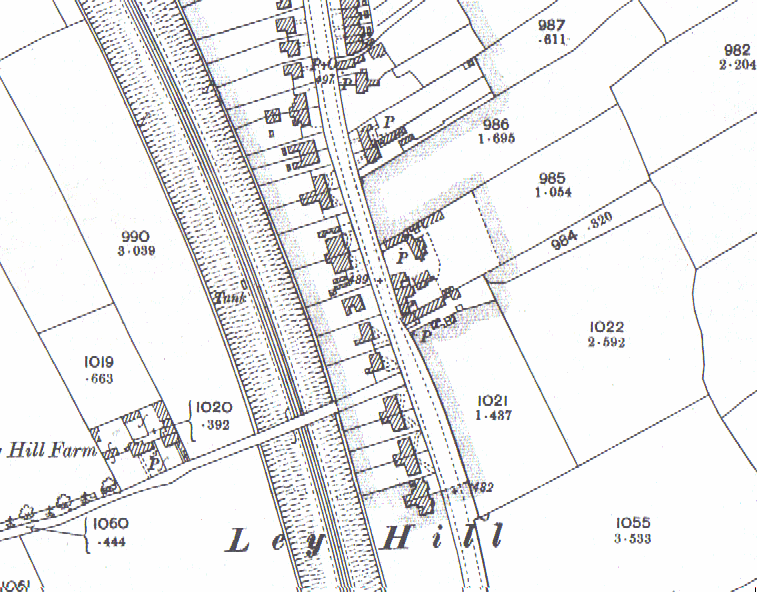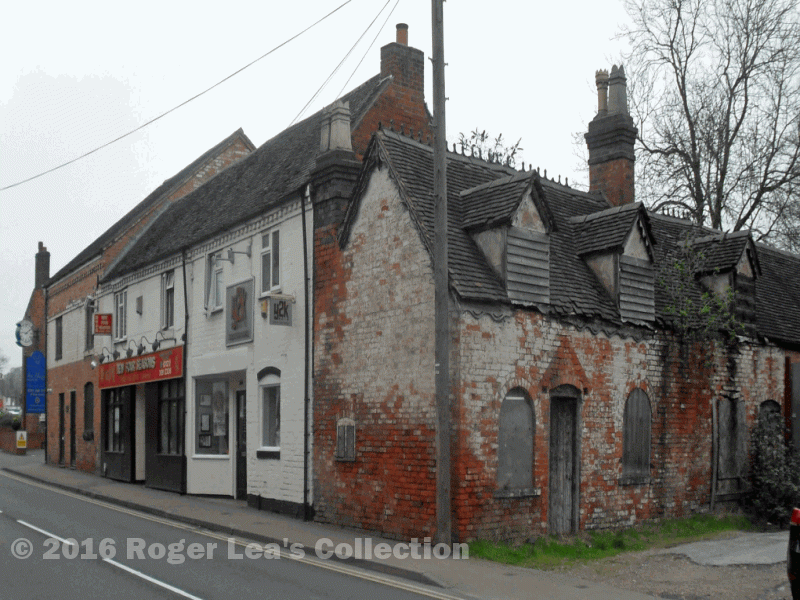Riding north out of Sutton in 1850, a traveller along Lichfield Road would come first to the “Top of Sutton” at the Tamworth Road junction; from there it would be the district of “Doe Bank” as far as the junction with Four Oaks Road; beyond Doe Bank was Ley Hill, which extended nearly to Mere Green. These districts were known to the census enumerators, and they recorded the households living there - nine households in each district in 1841 and 1851.
At Ley Hill, the left-hand side of the road as far as the Fordrough was an open common until 1830, and to the north of the Fordrough were three large fields; the houses were on the right-hand side, and the oldest house, which is still standing, was nearly opposite the Fordrough. The tenant here in 1824 was John Smith the baker, a farmer in small way, with a farmyard and a barn behind the house - he was also the tenant of nine nearby fields, totalling thirty acres. In the 1851 census Smith is described as “Farmer of sixty-five acres and coal dealer”, but the record in the Valuation of 1856 describes the buildings as a “house in ruins and a barn”.
By 1851 there had been a new development in the field next to Smith’s house, where a “house, buildings, yard and garden” had been built in the half-acre part of the field next to the road. This half-acre had been purchased by James Hastilow, where he established his business as a wheelwright - the Valuation lists a wheelwright’s workshop forty-six feet long. The 1851 census shows that he was originally from Tamworth and was then 35 years old, married with four children; also living there was his wife Mary’s 18-year-old brother, Charles Loyns, employed in the wheelwright’s trade.
The 1871 census shows that Mary Hastilow was now a widow, six of her eight children still unmarried and living at home, with two of her sons carrying on the wheelwright’s trade. The ruined house next door must have been repaired, as Samuel Proffitt, farmer of twenty acres, was living there with his wife and two grown-up children; they also had a lodger. As the population of Sutton increased, more houses were built in Ley Hill - the 1902 OS map shows continuous development from the Fordrough to Mere Green, and Hastilow’s descendants had built a row of three cottages on their frontage.
This little group of buildings, later owned by Chamberlain’s garage, now Hazel the undertaker, is still there. The oldest cottage, once home to John Smith the baker, has been vacant for many years, being used for storage, and is a valuable reminder of times past.

